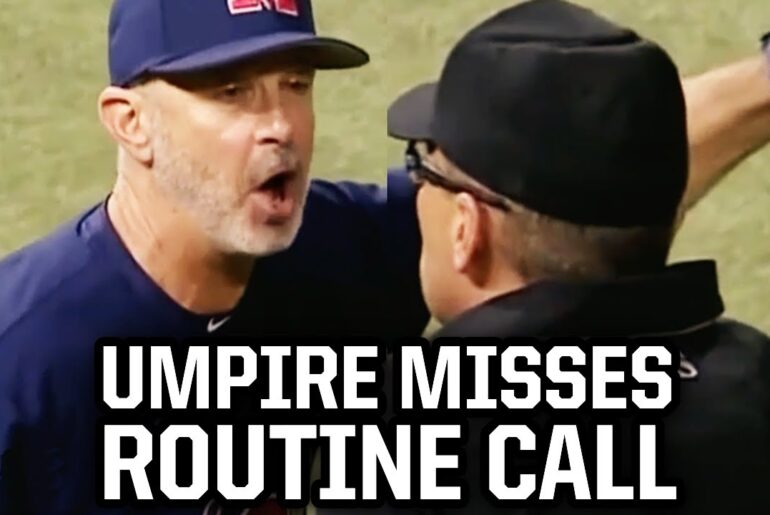In a recent World Series game, umpire Pat Hoberg delivered a flawless performance, calling a perfect game. This article delves into what made Hoberg’s umpiring so special and examines the qualities that make him an exceptional umpire. We will also explore the lessons that other umpires can learn from his consistent performance.
Consistency and Accuracy
One key aspect of Hoberg’s umpiring style is his unwavering consistency. Throughout the game, he displayed a remarkable ability to maintain a consistent strike zone, ensuring that both pitchers and batters knew what to expect. Hoberg’s performance was so impressive that the UMP scorecard from unscorecards.com rated him perfect.
It is important to note that umpires have a slight margin of error, allowing for some variability in the calls. However, Hoberg demonstrated great consistency even within this margin. While there were a few instances where his calls deviated from his own consistency, they were still accurate calls based on the true strikes and balls.
Umpire Positioning and Interaction
One aspect that stood out in Hoberg’s performance was his positioning behind the plate. Unlike most umpires who align themselves with the batter’s side, Hoberg positioned himself right behind the catcher’s head on the batter’s side. This unique positioning allowed him to have a clear view of the pitches as they crossed the plate.
Furthermore, Hoberg showed excellent synchronization with the catcher. He moved in tandem with the catcher’s late adjustments, ensuring that he was always well-positioned to make accurate calls. This coordination between the umpire and catcher is crucial, as it prevents the batter from discerning the catcher’s setup and maintains the integrity of the game.
Contrasting Performances
To better understand Hoberg’s exceptional performance, it is instructive to compare it with less proficient umpires. For instance, Greg Gibson, in a different game, failed to align himself properly with the catcher, resulting in poor calls, especially on the outside part of the plate. Similarly, CB Buckner, who was known for his inaccurate calls throughout the season, displayed a lack of anticipation and consistency in his positioning.
By highlighting the contrasting performances, we can appreciate Hoberg’s dedication and skill in maintaining a consistent strike zone, even in challenging situations.
The Complexity of Umpiring
Umpiring is an incredibly demanding task, as revealed by the statistics. Surprisingly, umpires only need to call approximately 50.5% of pitches, as the rest are either swung at by the batters. This realization emphasizes the significance of accuracy in those pitches that require umpire intervention.
Furthermore, umpires face a considerable challenge in determining the fate of pitches that fall within the \”shadow zone\” – the region between clearly defined strikes and balls. On average, umpires have to make decisions on approximately 58 such pitches per game. Hoberg, in the World Series game, encountered 44 such pitches, showcasing his ability to consistently make accurate calls in these critical situations.
Analyzing Hoberg’s Performance
Examining Hoberg’s performance, we find that he was exceptionally consistent in his calls on the inside and outside edges of the plate. His positioning and keen eye allowed him to accurately determine whether these pitches were strikes or balls. By overlaying the called strikes on these edges, we can observe the remarkable consistency in his judgment.
Hoberg’s accuracy also extended to low and high pitches. While these areas vary depending on the batter’s height, Hoberg consistently called the pitches according to their actual location. In some instances, the batter’s posture and movement during the swing may have influenced the call, but overall, Hoberg maintained consistency and accuracy.
The Role of Umpires
Hoberg’s exemplary performance raises questions about the umpiring system as a whole. Why are experienced umpires not assigned to home plate more frequently, especially in crucial games? It is evident that relying on skilled umpires, like Hoberg, behind the dish enhances the reliability of calls and instills confidence in the players.
As we reflect on Hoberg’s flawless performance, it is essential to consider implementing changes in the umpiring system before technology, such as robotic umpires, becomes prevalent. Assigning the best umpires to the most critical positions and reevaluating the current rotation system could lead to improved accuracy and fairness in the game.
Conclusion
Pat Hoberg’s perfect game in the World Series showcased his exceptional umpiring skills. His consistency, accuracy, and positioning behind the plate set a high standard for umpires. By studying his performance and contrasting it with other umpires, we gain valuable insights into what makes an umpire truly exceptional.
Umpiring is undoubtedly a challenging task, and Hoberg’s flawless performance serves as a reminder of the difficulties faced by those responsible for calling balls and strikes. However, by recognizing and appreciating exceptional umpires like Hoberg, we can strive to improve the system and ensure fairness and accuracy in the game we all love.



